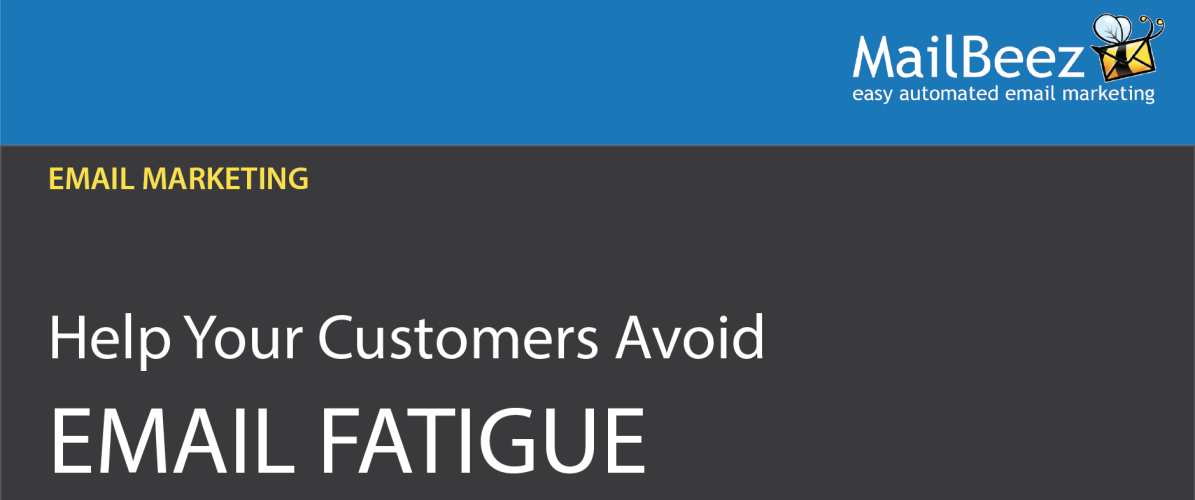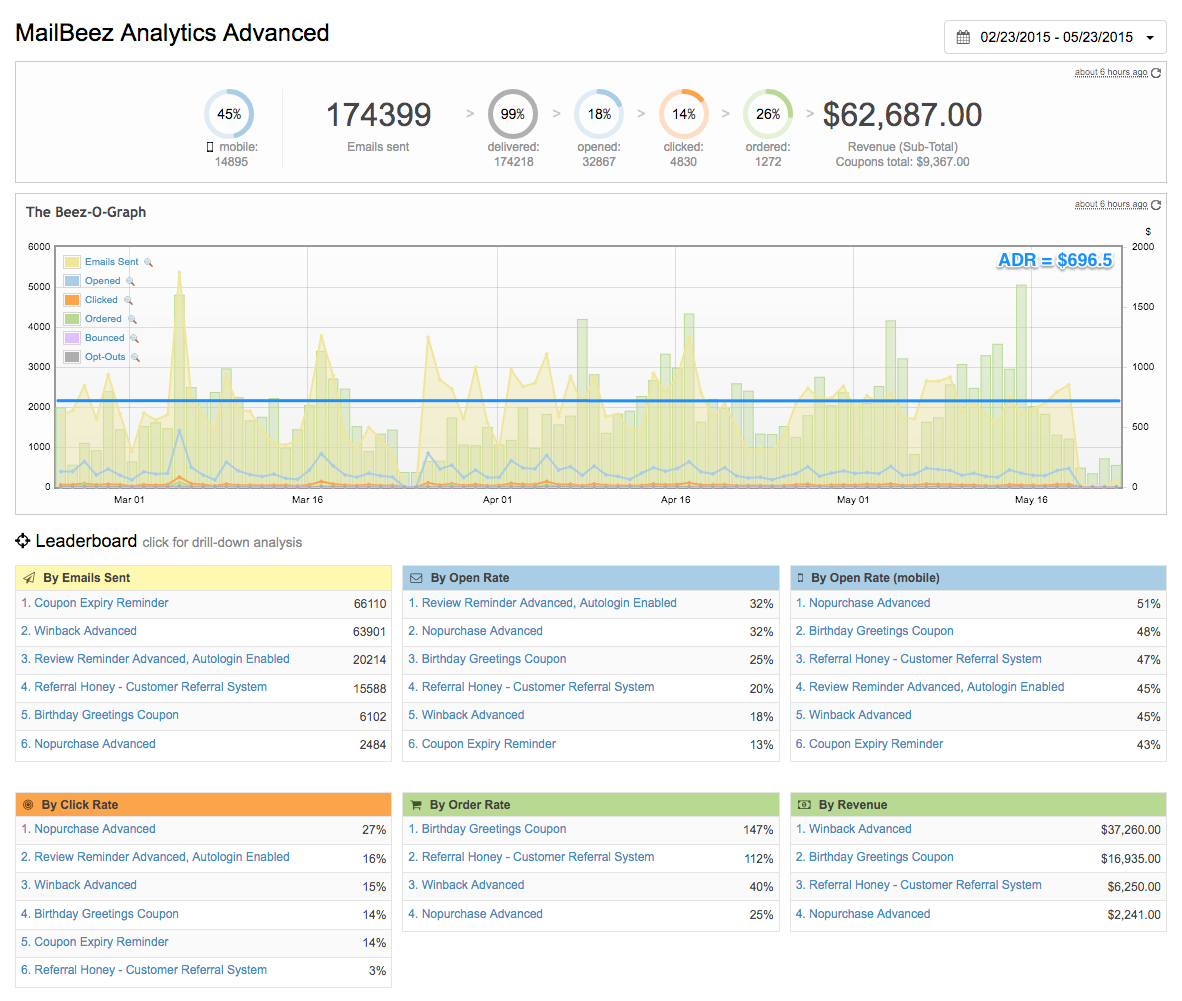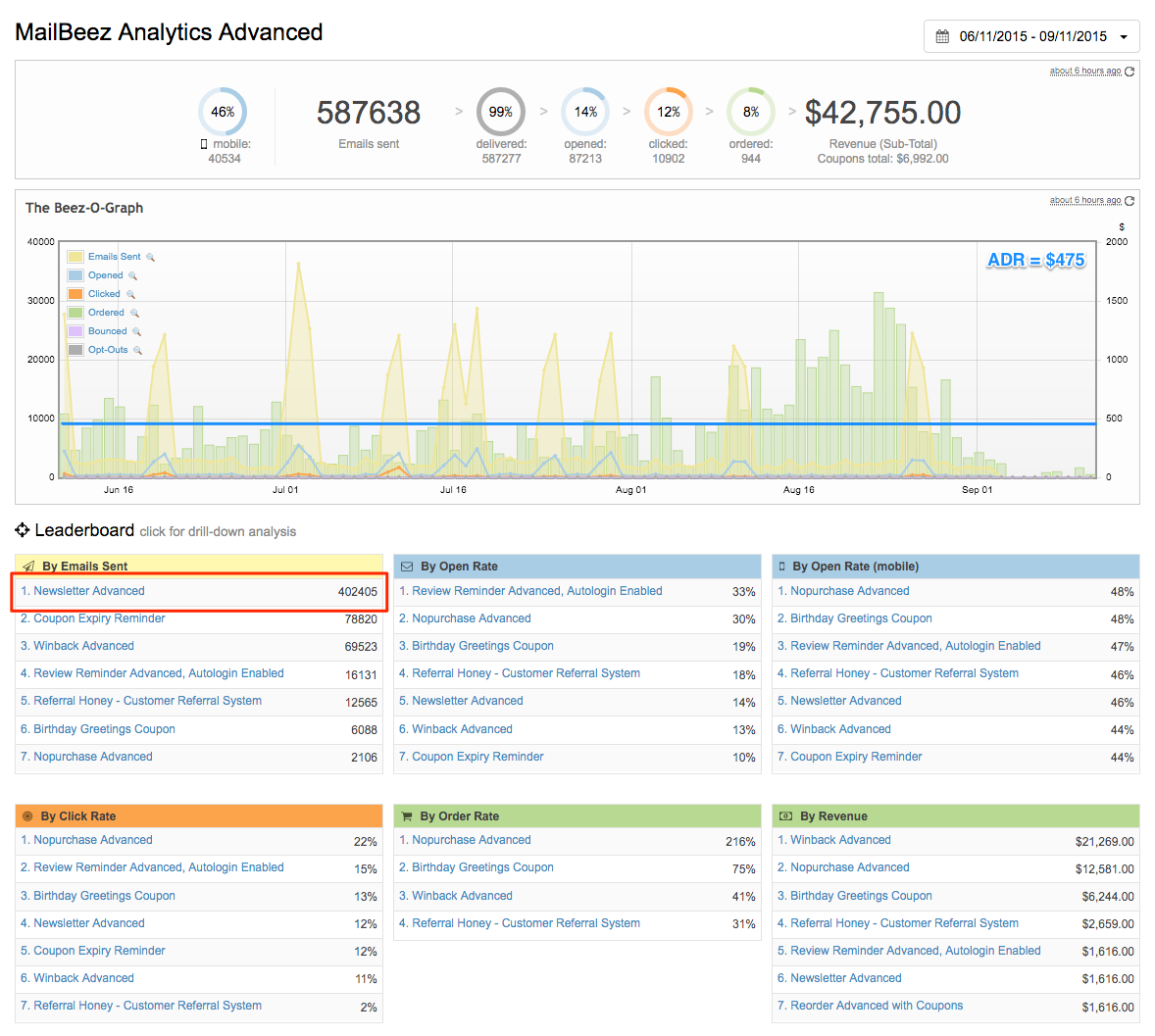Great, you’ve decided to engage your customers with a regular after sales emails and newsletters. But be careful! Not planning effectively here could make your newsletter and other email communications ineffective. Worse yet, you risk destroying your relationship with customers, and negatively impacting your bottom line.
Consider this, you’ve sent newsletters, promotions, birthday greetings, winback and other email communications to customers a few times per month. However, you’ve noticed that this has not had the desired affect on sales, and even engagement has decreased. If this sounds familiar, your customers may be experiencing email fatigue. Email fatigue happens when customers receive so many emails that they no longer respond to them.
In this post, We’ll review some tips on how you can avoid email fatigue and other emailing pitfalls that contribute to customers tuning out.
What is email fatigue?
Email fatigue is the result of mailing irrelevant content to your customers or subscribers too often. In other words, it’s when you send the wrong message to the wrong people at the wrong time.
We’ve all been there before. We sign up for the mailing list at our favorite online shop, and within hours, the first email arrives in our inbox telling us about a great deal on a new product or service. Fine. A few hours later, a new email arrives. Then another email arrives the next day. A couple of days later, a few more emails arrive. We’ve now received over five emails about stuff we may or may not be interested in within the first week of giving our permission to receive content from the retailer. We will tolerate this for a while, until we eventually stop opening the emails, and ultimately unsubscribing altogether.
Saturation effect is another concept you should keep in mind, and is related to the economic theory of law of diminishing returns. Saturation effect is where sales conversions reach a limit after which more marketing messaging has almost zero incremental effect. So, at a certain number, no matter how many more emails a customer recieves, they will not convert to sales. A subsequent effect is thus email fatigue for the receiver.
How can you guard against email fatigue? Three things to consider when sending emails: Relevancy, Frequency, and Rate. Lets take a look at each of these.
Relevancy
Are you providing value to your customers? Another issue sending emails, especially newsletters, is not providing value by sending the same type of information or offers over and over again. Sure we want to focus on selling, that’s why we’re in business. But without providing anything relevant and useful in our communications, the newsletter becomes useless noise. To get around this problem, your newsletters should provide useful content like tips, tricks, useful links and yes, discounts, and promotional deals (in moderation).
As with any marketing message, remember to segment your audience. Segmentation is a critical technique to get the right message to the right customer at the right time.
Frequency
Are you sending more emails than your customers want receive? How often you send emails can have a significant effect on your revenue and email engagement rates. You should ask customers what they want to receive, and deliver it at non-invasive intervals. The two most popular choices for receiving email newsletters are “monthly” and “weekly” according to research by Smart Insights.
How often you email your subscribers can have both positive and negative. For each business, there is a sweet spot where you achieve maximum engagement at an optimal email frequency. This is something you’ll have to uncover for your own business by closely analyzing your MailBeez statistics.
Rate
Are you paying attention to how much time elapses between each email your customers receives? Email rate (also known as bombarding) is closely related to email frequency, but the focus here is on the spacing and timing of emails received relative to each other. For example, a customer might be willing to receive 5 emails per month, but not the same 5 emails, especially if the content is irrelevant, all received in the same week. Again, try to deliver targeted and relevant emails at non-invasive intervals.
Case Study
One of our MailBeez clients contacted us to help with an issue that they’ve noticed... declining sales and low engagement with newsletter emails. After some analysis, we found a clear trend over a 6 month period, of declining sales conversions just after newsletters started to be sent. The decrease in overall sales is evidenced by a drop in Average Daily Revenue (ADR) indicated by the blue line in the diagrams below.
In this client case, the client started sending newsletters in June 2015, three to four times per month, with basically the same content, which included a seasonal or promotional discount. We see a decline in sales almost immediately, and this continued over the next few months. Average Daily Revenue for the period dropped from $696.5 to $475 (see image below). A correction occured, when the sending frequency was adjusted in August 2015.
We would generally expect sales attributed to the newsletter to be low, however we should see some minimal amount of click-through to sales as these newsletters also generally included coupons. Furthermore, overall engagement remained low (compare to the number of newsletters sent with its corresponding open and click rates for the period before June), and attributed sales were minimal.
Several things could be happening here; either the content of the newsletter was not engaging enough to stimulate conversions, or it could mean that email fatigue has set in, with the customer receiving an excess of messaging, and thus deciding to disengage.
Final thoughts
Changing how often you email your subscribers can have varied effects, both positive and negative. There is no silver bullet. You have to learn what works for your products and customers.
Also, review your MailBeez email analytics on a regular basis and understand how your emails are performing against the success criteria for your business. Watch for trends like changes in engagement with specific email types, or a spike in unsubscribes.
If you want help developing or optimizing your MailBeez marketing emails, book our Consulting Service now.


